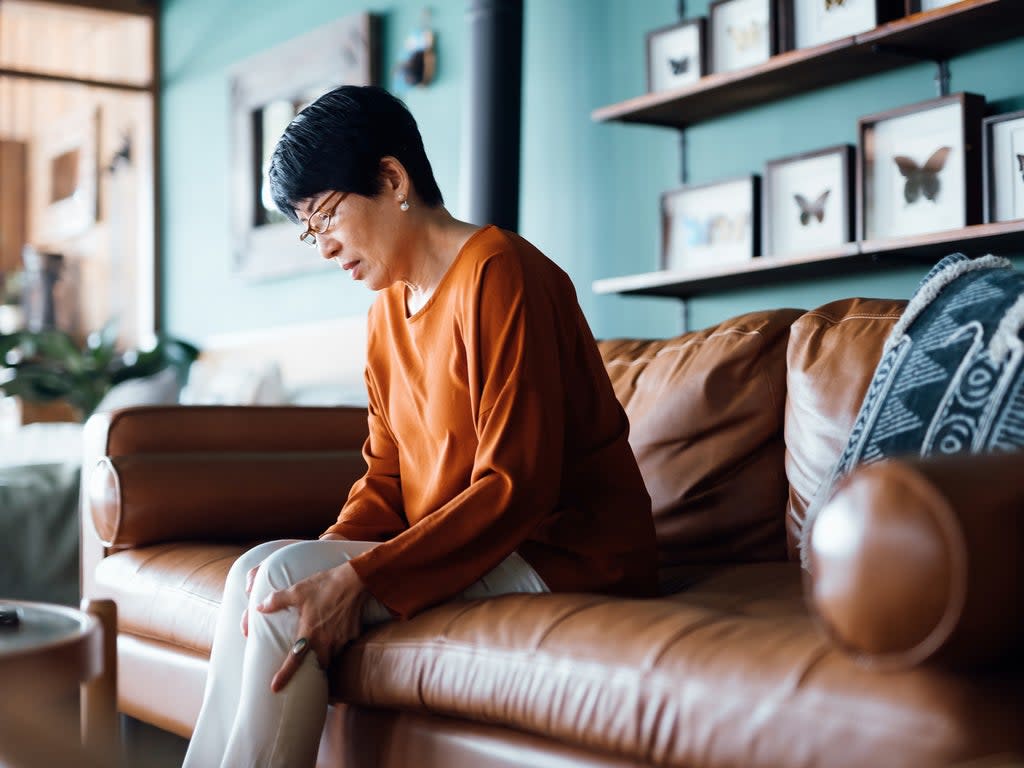Osteoarthritis: What is it and what are the symptoms?

The NHS will now advise people who have osteoarthritis to exercise to help ease pain and keep joints supple.
The National Institute for Health and Care Excellence (NICE) published new draft guidelines for treating osteoarthritis and said that exercise should be considered a “core treatment” along with weight loss “if appropriate”.
Arthritis Action, a charity that supports people affected by the joint condition, said the guidelines will hopefully reassure patients that exercise is a good non-surgical intervention, even though it may hurt to begin with.
Dr Wendy Holden, a spokesperson for the charity, said: “Many wrongly believe that exercise can harm the joins, so this guidance is very important and will hopefully empower patients and give them more confidence to make healthy lifestyle changes that will really help improve their pain and quality of life.”
But what is osteoarthritis and how do you know if you have it?
What is osteoarthritis?
Osteoarthritis is a condition that causes joints to become painful and stiff.
It is extremely common, with an estimated 7.4 million people over the age of 45 in the UK suffering from painful joints due to osteoarthritis.
The condition is the most common form of joint arthritis and cause of disability in the UK, according to NICE.
The older a person is, the more common it is to experience osteoarthritis. Obesity is also a common risk factor.
Almost any joint can be affected by osteoarthritis. However, the condition is most common in the knees, hips and small joints of the hands.
What are the symptoms of osteoarthritis?
According to the NHS, the main symptoms of osteoarthritis are joint pain and stiffness, which results in problems moving the joint.
Some people might experience other symptoms such as swelling and tenderness, and a grating or crackling sound when moving the affected joints.
The severity of symptoms can vary greatly from person to person, ranging from mild and inconsistent to continuous and severe pain that makes it hard to carry out everyday activities.
What causes osteoarthritis?
Osteoarthritis occurs when the protective cartilage on the ends of your bones breaks down, which results in pain, swelling, and problems moving the joint.
While the exact cause for the condition is not known, the NHS says there are several factors that are thought to contribute to a person’s risk of developing it.
Aside from ageing and obesity, other factors include joint injury, secondary arthritis (such as rheumatoid arthritis or gout), and family history.
Women over 45 are also at higher risk of developing osteoarthritis, which scientists believe is due to hormonal changes around menopause.
During menopause, oestrogen levels decline. According to Dr JoAnn Pinkerton of the North American Menopause Society, the presence of oestrogen receptors in joint tissues suggests that the hormone “may play a role in protecting their biomechanical structure and function”.
A 2018 Korean study, published in the journal Menopause, found that knee osteoarthritis was 30 per cent lower in participants who used hormone replacement therapy (HRT) for menopause compared to women who didn’t.
How is osteoarthritis treated?
Osteoarthritis is a long-term condition that has no cure. However, the NHS says it does not necessarily get worse over time and can sometimes improve gradually.
Mild symptoms of osteoarthritis can be treated with regular exercise, weight loss if the patient is overweight, wearing suitable footwear and using special devices to reduce the strain on your joints.
The new draft guidelines from NICE recommends tailored therapeutic exercise be offered to all people with the condition.
It advises GPs to explain that “doing regular and consistent exercise, even though this may initially cause discomfort, will be beneficial for their joints”.
Patients with severe osteoarthritis who are unable to alleviate their symptoms with these treatments or have particularly bad damage to the joints may have to undergo surgery to repair or replace it.


